![]()
There is no better trade deadline acquisition the Pittsburgh Penguins could make before the Feb. 25 trade deadline as they gear up for a playoff run than getting Evgeni Malkin, Justin Schultz and Zach Aston-Reese back from injury. Of course, this will lead to some lineup and roster shuffling to accommodate their returns, but it’s a welcome sight for a team without a full complement of players since Oct. 13, the day Schultz suffered a fractured leg against the Montreal Canadiens.
The roster has changed quite a bit even since Malkin went down 11 days ago, so how much will it change when all three players return?
Forwards
Right now, the Penguins are currently missing two key forwards in Malkin and Aston-Reese. Getting Malkin back is the more important one, but Aston-Reese is still a noticeable absence. Both are currently termed day-to-day by head coach Mike Sullivan, which could mean they’ll return within the next week or so.

When both are healthy, the Penguins have 14 forwards so somebody is going to have to be sent down and another is going to become the 13th forward.
As of Feb. 8, the Penguins’ lineup is the following:
Jake Guentzel- Sidney Crosby- Nick Bjugstad
Bryan Rust- Matt Cullen- Phil Kessel
Dominik Simon- Jared McCann- Patric Hornqvist
Tanner Pearson- Teddy Blueger- Garrett Wilson
Related – Penguins Midseason Grades: Forwards
Stating the obvious here: nobody in the top-nine, except Cullen, is going to drop out of it, let alone fall out of the lineup entirely. Though you could make a case for Cullen to be the odd man out, he won’t be.
Cullen Will Remain in the Lineup
Among all skaters who’ve played more than 200 minutes, Cullen’s 40.3 Corsi for percentage (CF%) and 40.1 shots for percentage (SF%) rank sixth-worst while his Fenwick for percentage (FF%) of 41 ranks eighth-worst. To be fair to Cullen, he’s starting a ridiculous number of his even-strength shifts in the defensive zone, 85.4 percent, but those numbers are almost equal to what he accomplished last season with the Minnesota Wild with a defensive zone start percentage (dZO%) of 52.1.
Despite his struggles, Cullen does have a goals-above replacement (GAR) of 2.4, which indicates some underlying success for the 42-year-old. In addition to his positive GAR, the Penguins love Cullen’s leadership qualities and view him as a key piece of their fourth line so he won’t be removed from the lineup. But it wouldn’t be the worst idea for the team to give him a breather at times to keep Cullen fresh for what could be his final playoff run.

Wilson Will Become the 13th Forward
When Wilson was called up in mid-November, he was only expected to stick around for a few games, but he may be the best part of the Penguins’ fourth line right now. In 25 games this season, the 27-year-old has five assists while averaging 7:48 of ice time a night. Wilson’s still searching for his first NHL goal, but it’s not for a lack of trying. He’s creating a few chances a game; it’s just about getting that lucky bounce.
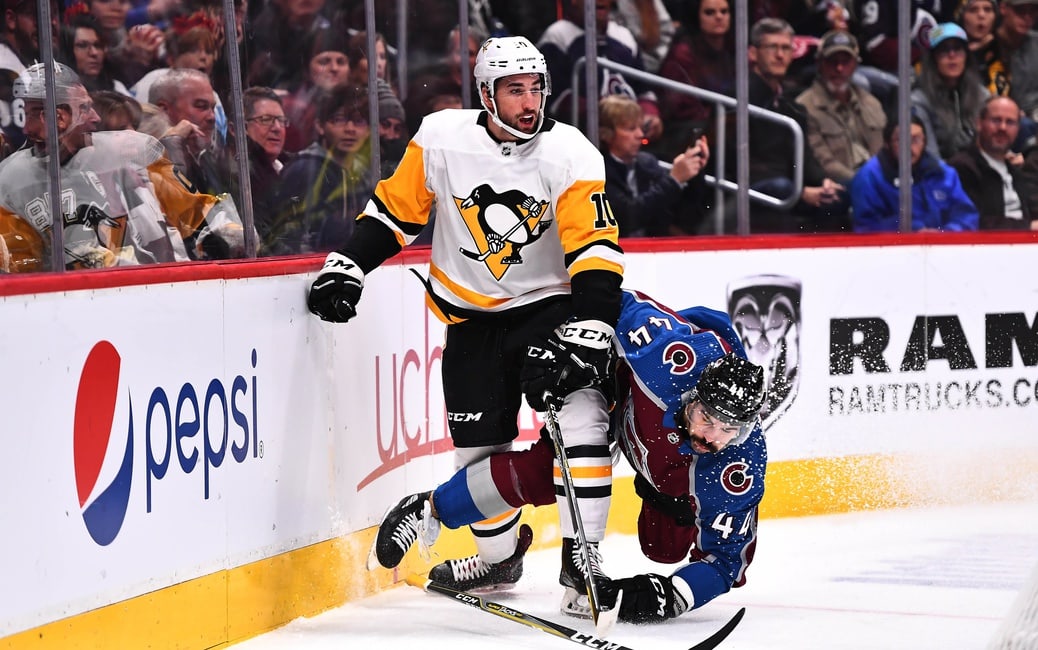
The most impressive part of Wilson’s season so far is how well he’s fared analytically despite starting almost 88 percent of his shifts in the defensive zone. His 49.5 CF%, 51 FF% and 48.9 SF% are all tops on the Penguins’ fourth-line and better than numbers from players like Kessel and Pearson.
The Penguins are also winning the high-danger and scoring chance battles with Wilson on the ice. His 57.2 scoring chances for percentage (SCF%) is third among all active Penguins, his high-danger chances for percentage (HDCF%) of 63.4 is second and his high-danger goals for percentage (HDGF%) of 71.4 is first. In short, he’s been the ideal fourth liner and more.
Even though he isn’t scoring, Wilson is keeping the game in the Penguins’ favor when he’s on the ice and giving the top guns a chance to take control of the game. That’s what you need from your fourth line. Even better for the Penguins, at 6-foot-2, 199 pounds, Wilson is bringing size to the lineup without being detrimental to the team.
Unfortunately for Wilson, he’ll likely become a rotating 13th forward because he’s a winger and the Penguins have a lot of them. However, if he continues this level of play, he’s going to force Sullivan into making some tough decisions.
Blueger Likely to Go
The Penguins’ all-time leading scorer among Latvian born players, Blueger has been very good over his first five NHL games. He’s done all the little things right, scored his first two NHL goals and has even killed some penalties. Though it likely won’t be enough to save his roster spot.
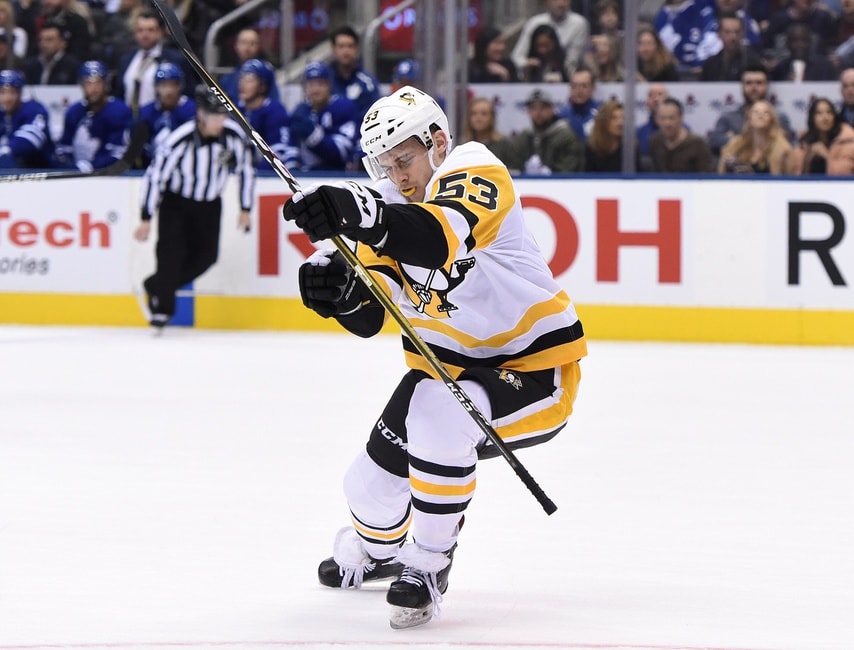
Because professional sports are about having as much roster flexibility as possible, Blueger’s ability to be sent down to the minors without requiring waivers will seal his fate for now. Since he doesn’t have much left to prove in the AHL, Blueger will likely become a shuttle body for the Penguins over the last month and a half of the season. Regardless of where he finishes this season, he will probably be a full-time Penguin in the 2019-20 season with Wilson and Cullen headed to free agency and limited cap space (projected $4.1 million for seven players) requiring inexpensive depth pieces.
Related: Blueger Making Strong First Impression
Blueger has speed, some offensive flair and an advanced defensive game, but players with his potential grow on trees. He’s never going to be a fixture in the top-six, and he may not even make it as a third-line center. That said, no player has had their career defined by their first five games, and he could very well turn out to be a vital piece of the bottom-six for seasons to come. It just won’t happen this season.
Projected Lines:
Guentzel-Crosby-Rust
Bjugstad-Malkin-Kessel
Simon-McCann-Hornqvist
Pearson-Cullen-Aston-Reese
Wilson
Defensemen
The blue line has never been the Penguins’ strongest area, but missing Schultz since October hasn’t done them any favors. Kris Letang is having a Norris Trophy-worthy season and Brian Dumoulin is doing his thing, but they can’t play all 60 minutes. When they’re off the ice, there is a glaring hole on defense. Schultz’s return won’t fix all of those holes and he’s going to have some rust at first, but he’s going to bring more to the lineup than any external acquisition would.
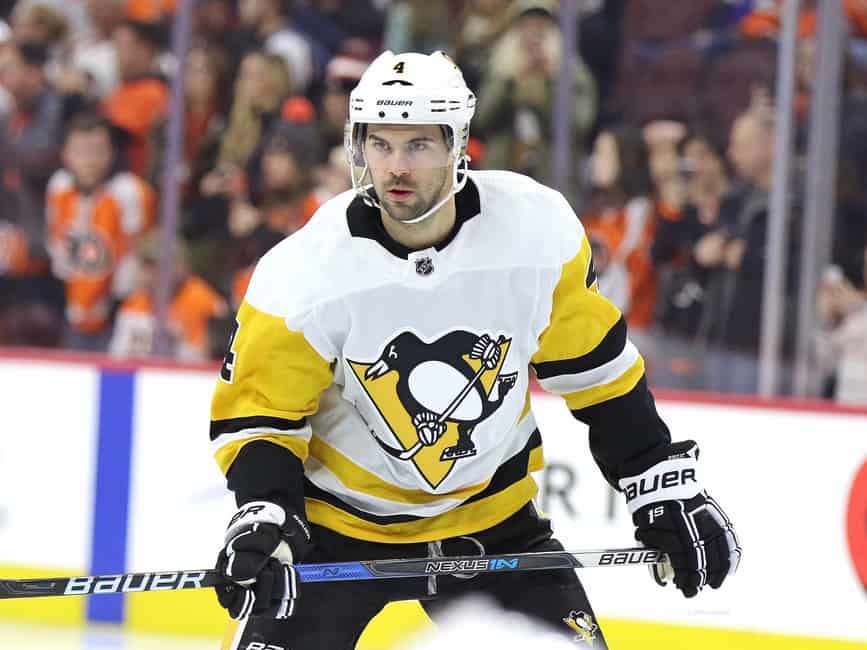
Once he gets up to speed, Schultz will give the Penguins three top-end defensemen as they gear up for what they hope is another long playoff run. It’s lazy to say his layoff will help as he won’t have much wear and tear on his body because there’s a difference between intense rehab from a significant injury and just resting, but he won’t be as taxed as a defenseman who’s played 25 minutes a night all season.
As of Feb. 8, the Penguins’ defensive pairings look like this:
Marcus Pettersson – Letang
Dumoulin – Jack Johnson
Olli Maatta – Juuso Riikola
The first thought here is: having Letang and Dumoulin split up makes no sense. They’ve been one of the best pairings in hockey since the 2015-16 season and splitting them up gives you three mediocre pairs instead of one elite pair and two below-average one. It’s likely Sullivan will return to his old pairings in short order like he did when he experimented with it earlier in the season.
Related – Penguins Midseason Grades: Defensemen and Goalies
The second thought is: who sits when Schultz comes back? The logical answer is Johnson, but that’s not going to happen. The Penguins aren’t going to bench a player who has another four seasons left on his contract regardless of how poor his play has been this season. If they hope to rid themselves of his contract anytime soon, even to a team just looking to hit the cap floor, they have to continue to play him and hope a general manager sees something in the 32-year-old.
No, it’s not going to be Maatta either. While he hasn’t been as consistent as last season, he is still a good player and scratching him isn’t going to make the defense better. In 53 games this season, the 24-year-old has 13 points while averaging 18:47 a night.
He is sporting the worst possession numbers of his career with a 45.4 CF% and 47.3 SF%, but Maatta has a career-high dZO% of 58.9 dragging down those stats. Even with his poor possession metrics, GAR models rank Maatta as the Penguins’ second-most valuable defensemen and the 10th-most valuable blueliner in the league.
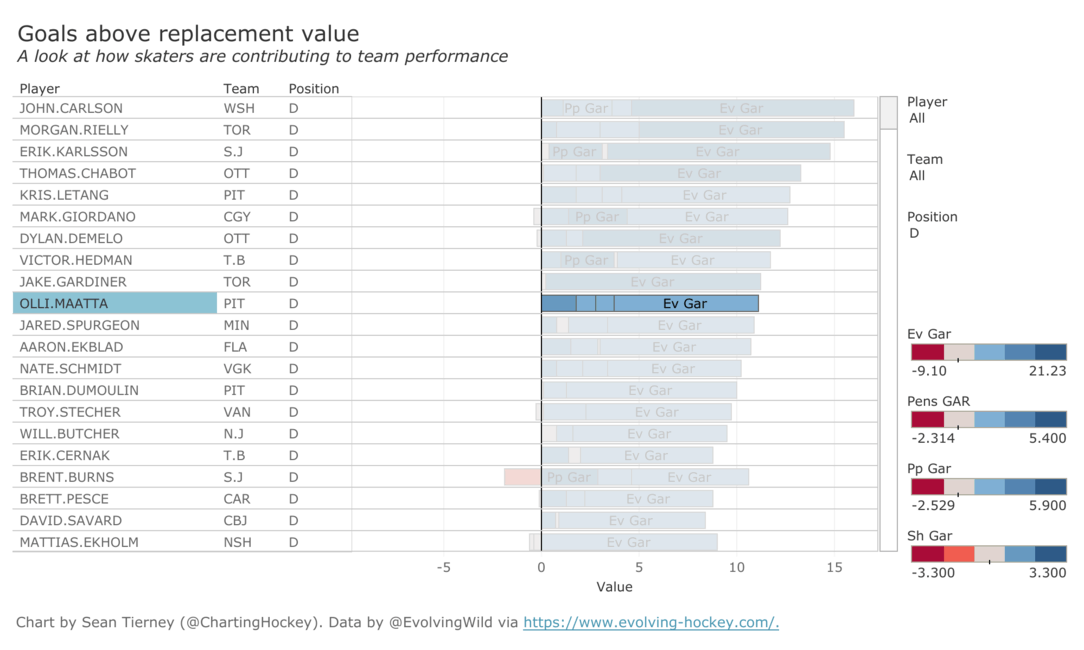
The Odd Man Out
With Johnson and Maatta not sitting, Riikola is the odd man out when Schultz returns to the lineup. The 25-year-old hasn’t been particularly bad during his rookie season, but he hasn’t exactly been good either. Regardless, what he’s done is impressive considering he wasn’t even supposed to start the season with the Penguins after signing with them out from KalPa of Liiga, Finland’s top professional league.
Through 31 games Riikola has two goals and four points while averaging 16:49 of ice-time a night. Like Maatta, Riikola is posting poor possession numbers (46.2 CF%, 46.9 SF%) while starting a high percentage of his shifts in the defensive zone (56.5). Unlike Maatta, though, Riikola hasn’t been given favorable values in the GAR department. His GAR of minus-.3 ranks sixth on the team, ahead of only Johnson and Chad Ruhwedel.
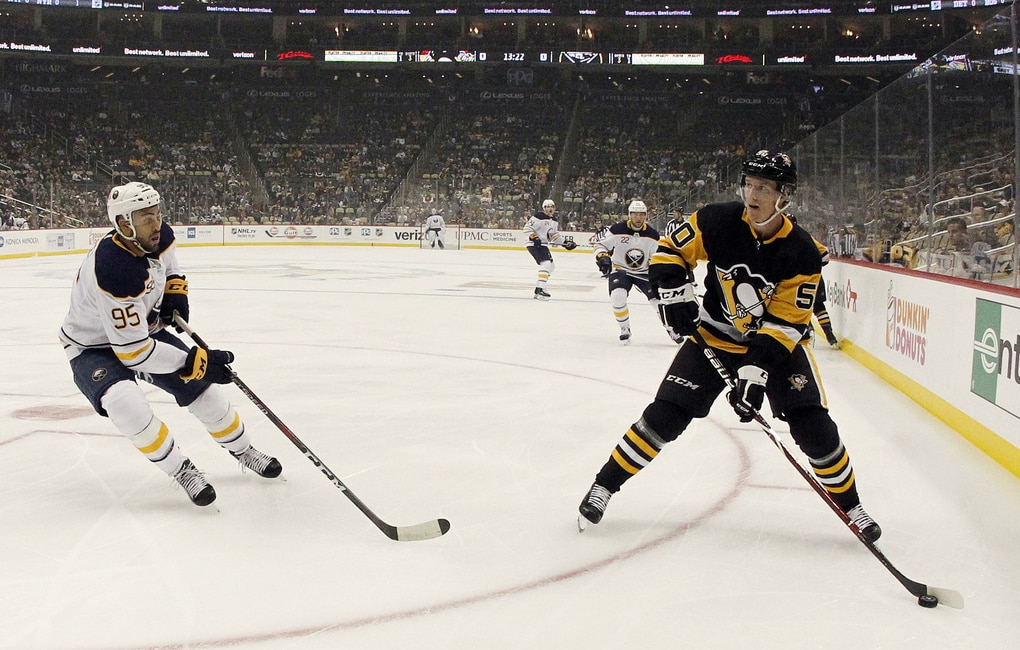
Even with his poor GAR and possession numbers, Riikola is still one of the six best defensemen on the team. That probably says more about the Penguins’ lack of quality defensive depth than anything else. However, in the ideal world for the Penguins, Riikola would be a regular in the lineup after Schultz returns. In the end, it’s a numbers game, and having Johnson under contract for four more years makes Riikola a lock to be watching a majority of games from the press box shortly.
Projected Lines:
Dumoulin-Letang
Maatta-Schultz
Pettersson-Johnson
Riikola and Ruhwedel
Are the Penguins Good Enough?
On paper, the Penguins have one of the league’s deeper rosters. Their top-end talent in Crosby, Malkin, Kessel, Guentzel, Hornqvist and Letang can only be matched by two or three teams around the league. All they need is league-average goaltending to be a powerhouse team.
Their play on the ice is a different story. For whatever reason, the Penguins have stretches of complete incompetence where they look like one of the worst teams in the league; other times, they look like nobody can stop them.
They dealt with consistency issues during their consecutive Stanley Cups, but it finally came back to haunt them during last season’s second-round playoff loss to the Washington Capitals. If the Penguins want to avoid an early exit again, they need to work out their kinks over their final 28 regular season games.
When they’re fully healthy, the Penguins will be deeper than they’ve been at any other point this season and have the ability to go toe-to-toe with anybody who comes before them. So until they lose the fourth game in a playoff series, nobody is going to count them out. Talent can only take you so far, and until they show flashes of returning to their 2016 and 2017 forms, the Penguins will face an uphill battle in their quest for a third Stanley Cup in four seasons.